- News
- Reviews
- Bikes
- Accessories
- Accessories - misc
- Computer mounts
- Bags
- Bar ends
- Bike bags & cases
- Bottle cages
- Bottles
- Cameras
- Car racks
- Child seats
- Computers
- Glasses
- GPS units
- Helmets
- Lights - front
- Lights - rear
- Lights - sets
- Locks
- Mirrors
- Mudguards
- Racks
- Pumps & CO2 inflators
- Puncture kits
- Reflectives
- Smart watches
- Stands and racks
- Trailers
- Clothing
- Components
- Bar tape & grips
- Bottom brackets
- Brake & gear cables
- Brake & STI levers
- Brake pads & spares
- Brakes
- Cassettes & freewheels
- Chains
- Chainsets & chainrings
- Derailleurs - front
- Derailleurs - rear
- Forks
- Gear levers & shifters
- Groupsets
- Handlebars & extensions
- Headsets
- Hubs
- Inner tubes
- Pedals
- Quick releases & skewers
- Saddles
- Seatposts
- Stems
- Wheels
- Tyres
- Health, fitness and nutrition
- Tools and workshop
- Miscellaneous
- Cross country mountain bikes
- Tubeless valves
- Buyers Guides
- Features
- Forum
- Recommends
- Podcast
feature
 The present and future of cycling computers - March 2023
The present and future of cycling computers - March 2023The present and future of cycling computers — how are Garmin, Wahoo and Hammerhead pioneering GPS tech?
Last year, I reviewed a handful of e-bikes at the same time as I reviewed the Hammerhead Karoo II, and learnt a few new things: I was seduced by metrics like power, and a strangely addictive visual representation of which gear I was in (who knew).
It was also my introduction to Hammerhead and their brilliant Karoo II, which tops the current edition of the road.cc cycling computers buyer's guide. I raved about the Karoo II in a way that didn’t make me feel disloyal to, or love any less, my own Wahoo Elemnt Bolt. Somehow, they seemed so different as to not be competitors.
The cycle computers of the present are so good already, surely that means the future looks very bright for riders. So, I spoke to Wahoo and Hammerhead to ask about the future, and having had several Garmins, tried to reach out to them too...
Wahoo
The Wahoo Elemnt Bolt has been my day-to-day computer for the last 18 months, and from experience, coupled with my conversations with Stephane Maes, Head of Product and Design for Wahoo, and Megan Powers, Wahoo’s Cycling Product Manager, I now understand so much more about the company, their products, and the Wahoo way of doing things.
Talking about the present and future of their computers, Megan said Wahoo's guiding principle was, "How can we make this as user-friendly as possible?"
Stephane added that their mantra was ‘Simply powerful.’ Just hearing this made a lot of my use of the Bolt V2 come into sharper focus. I’ve found it exactly that, a simple, yet replete computer, at which I’ve never become frustrated.
"We make decisions to not enable certain capabilities," continued Stephane. "Unless we can do it well for 100% of users 100% of the time, it’s not really going to be a good experience."
Megan added a great example of this: "Black and white screens, were more visible than colour, adding colour screens just because they were available felt like a box checking exercise that actually worsened the experience."
Controlling for a high-end user experience, (rather than just loading in every function regardless of whether it works well or not) suddenly became the crystallisation of my opinion of Wahoo. They’ve rather beautifully integrated Garmin’s Varia Radar tech, (some say better even than Garmin) and I realised, much like Apple, that this approach was probably a major contributor to my frustration-free experience with Wahoo.
When I asked about functions that were for the moment absent from their eco-system (light integration leapt to mind), their response reflected this core philosophy.
"Rest assured we are listening to our consumers and prioritizing those integrations", Megan said.
"We're making sure it just works…. it’s definitely on our radar and when we do it, expect an experience similar to the implementation we’ve done with radar products that is well thought through and intuitive for the rider."
This sort of future functionality can be added as an over-the-air update, and leads us nicely to where Wahoo goes from here, and how much can be added via software, vs the need for new hardware? Stephane thought that future for Wahoo computers was very much about ‘context.’
“Context is everything.
‘Knowing the context of what surface you’re riding on, that you always ride on Tuesdays The more context we have, the more and more we can make decisions for the user."
So context, or data really, gleaned from not just where, when and on what you’re riding, but ingested from sensors, "whether it be glucose monitoring, core temperature, or whether it be sensors that sense the road and the conditions." This will be combined by intelligence, "machine learning and eventually A.I" claims Stephane.
"Basically triangulating information to provide better insights during your ride."
But they don’t just want to serve you information, because data presented "at you doesn’t help." They want the computer to digest it and give you useful actionable intelligence.
They suggested a scenario where gathering data from weight sensors in your axles, combined with temperature sensors, GPS and glucose monitoring, could lead the computer to tell you it’s noticed a performance drop-off that it hypothesises is down to you having drunk your two big bottles of water. It knows you’re now getting dehydrated, and have no more water, so it can suggest where to stop and refuel.
All this intelligent combination of a broad gamut of data sounds brilliant, and the insights genuinely useful. So Wahoo, see their future as being more connected to more and more sensors, with the computers becoming more intelligent.
Stephane continued: "Between AI and machine learning, you need more processing power and you need more memory.
"Of course there’ll be ‘richer maps over time, richer data, more colours, more points of interest. That means more storage."
All this performance increase also means more power requirements, or more power-efficient processors. Again, Apple is very vocal about this, and Stephane brought this all back to the mobile phone industry.
"All the capabilities from smartphones is what we leverage into our computers.
"If the smartphone world can't find a means to do it, we're not going to be able to do it because we have to draft off of that technology."
Of course this is no surprise, but to have him distil it down to this was clarifying:
"We're not building hundreds of millions of units, and so therefore the limiting factor is really the expense of the R&D.
"There is no technological limiting factor, we could build custom displays, but to justify a custom display and custom battery, you'd have to sell a lot more. That is tens of millions of dollars in R&D and tooling that this industry just can't afford.
So for future versions of the Bolt and Roam, whilst Stephane expects the dimensions to stay roughly the same (‘plus or minus 10%’), "you're going to see overtime products that have less bezel and more screen in the same X&Y dimensions."
It’s again no surprise to hear that future versions will be more powerful, with more memory, better screens, and more efficient batteries. What’s meaningful is how that all adds up to a better rider experience.
Hammerhead
The mobile phone analogy continues to work very well for Hammerhead too. If Wahoo is a curated controlled experience akin to Apple’s garden-walled ecosystem, then the Hammerhead Karoo 2 is very Android-like, and not simply because they do in fact use an Android operating system. Android’s an open-source operating system, and ‘open’ is the adjective I’d use to describe my Hammerhead experience. Commensurately, it’s also how I found Jess Braun, Hammerhead’s VP of Product.
Whereas Wahoo won’t integrate something until they can control the experience, and perfect it, Hammerhead allows - and encourages - the side-loading of apps, from the sublime to the ridiculous: sideload the Zwift app? Sure. Want to listen to music on your ride? Just add Spotify. Want to watch Netflix on your Karoo II? Do it. In fact, Jess suggested that the side-loading of apps was incredibly helpful to Hammerhead as it demonstrated cyclists' needs that were not being met.
If you’re a cycling content creator or someone else who needs to record your computer screen, not only does the Hammerhead do it, it’s the only computer that does. It’s this sort of different approach that allowed me to say it feels like we’re talking about non-competing products.
Part of this philosophy presumably endures from Hammerhead’s time as a lean start-up, who spotted daylight between the Garmins and the Wahoos of this world and pried open that niche to deliver an easily differentiated and novel product.
Their much-praised screen is indeed beautiful, and at 292 dpi, it’s just about twice the pixel density of any other screen. It was also the first computer to integrate the brilliant climber feature into general riding without a programmed route; basically, the computer will scan ahead and predict the hills you’ll come to. It’s indicative of perhaps Hammerhead's greatest USP, that goes hand in hand with their ‘open’ philosophy: frequent software updates, the rate of which in all honesty (as much as every two weeks) leaves every other company, not just cycle computer companies, in the dust.
All his isn’t done because they need to iron out bugs, it’s done because Hammerhead have got such a cadre of passionate users who email in suggestions. If they can make them work well, they add them. They are partially crowd-sourcing their own development, and this engenders real loyalty amongst their advocates.
However, somewhere in a room in Hammerhead HQ, they’re talking about what a Karoo III might look like in a few years time. Jess started off talking about their history as a lean start-up, right up to their acquisition by SRAM last year.
"Innovation is our core value", she said.
"We’re a product and engineering company who started out ‘lean’ by necessity, but the acquisition now gives us a ‘sense of stability,’ with ‘access to really smart people.
"SRAM have really pushed electric integration and given us the ability to think long-term. They also see themselves as ‘bringing people together."
Jess added that they were fastidiously keen on "more openness and open protocols", and generally getting "more people on bikes" to help "the sector and the world."
We design "with the performance cyclist in mind" she continued, though that’s changing with SRAM’s involvement.
"You can’t design for the edges when you're starting out and you're a young kind of early-stage company, and the displays and screens of other products just didn’t meet the needs of riders, so we invested there. And yes, there is a trade-off to power that screen, that trade-off is battery."
Battery life really is such a startling point of differentiation between the devices, and every brand I talked to welcomed advances in this technology in the future. A Garmin solar will go for up to 80 hours plus in ideal conditions, Wahoo claims 17-18 hours for their units, and the Karoo II will do between 10 and 13 hours. Personally, I’ve never been concerned with claimed battery life in a computer’s statistics, and trusted that the reason it was so often talked about was because lots of people must have cared. Perhaps I was wrong?
Or perhaps as Jess put it: "We have hundreds and hundreds of hours of talking with people. Once [they] have our products, we haven't seen a lot of people needing beyond that capacity, so I think it's a behaviour that the industry kind of perpetuated and brought upon itself.
"I say that because people don't think twice about charging their cell phone. Nobody thinks about that anymore, but somehow it's sacrilegious that you have to charge your computer."
I’m with Jess here, and really don’t begrudge a more frequent recharging for all that joy that screen brings. Nonetheless, Hammerhead are looking at ways to help riders to mitigate these problems, like reminders when you're low on battery juice.
Another big area of differentiation is in getting information onto and off the devices. Wahoo has a great companion app, while Hammerhead obviously set out to do things differently: to put the Karoo II at the centre, rather than your phone.
"We're again always kind of exploring what solves problems for riders. So we built the Karoo 2 specifically, being able to accommodate all of those functions simply over Bluetooth", says Jess.
"What we've actually learned is, in the North American market for sure, an auxiliary SIM card is just kind of confusing to people. A lot of people just want a companion app. So you know, right now we are watching what problems people actually need solved and who is a companion app for, to determine if it's something we want to do."
I personally would love to see a Karoo III with a companion app. Not because the Karoo II can’t do it all, but because I like to sit down off the bike with the big screen on my phone and get the setup perfect, and then press a button and shoot it across to my head unit, knowing I can update or tinker as needed on the computer itself.
So what was Jess looking forward to in the future?
"We’ll be pushing the bounds of predictive path technology and bringing more things contextually to the rider that they maybe didn't know about or didn't plan for. Right as they're riding. We have this algorithm now that has some sense of what you might do, and giving you information around it."
Again, this sounds not dissimilar to the AI and Machine learning powered contextual awareness and support that Wahoo looked forward to. Both make it sound like a rich utility driven experience.
The other tech I imagine we’ll see in a Karoo III is dual band GPS. Jess looked forward to "better GPS antennas and chipsets, adding thar riders "really care about being very precise."
With the increased reliability, and penetration into hard to reach places, dual bands chipsets are more accurate and reliable. Wahoo and Garmin both sport at least one dual band version currently.
Finally, it would be wrong to ignore the removal of Shimano Di2-connected features from (SRAM-owned) Hammerhead computers last year. All the companies I spoke to talked kindly about one another, about working together and mutual benefit, so it comes across as a little petty on Shimano's part, especially with the advent of Ki2.
Ki2 is a ‘side-loadable’ app that will restore di2 functionality to the Karoo, so Shimano's move will now now do nothing but add few steps to a Karoo user’s experience.
Jess says: "We are still very interested in bringing back that functionality, but it is at the discretion of Shimano and we're very excited to have any conversation."
Please Shimano, come back to the fold.
Garmin
Although Garmin weren't exactly forthcoming in talking about future developments, there is still a lot to read into looking at what is commercially available from the tech giant already, and where that could potentially lead.
For those who didn’t know, Garmin acquired the ANT+ creators Dynastream in 2006, and they now control and keep open this backbone of cycling communication. Both Wahoo and Hammerhead spoke generously of their shepherding of it. Again, all this made me feel like we’re talking about three friendly companies with non-overlapping products.
Much like the mobile phone industry, cycling computers saw a race to miniaturisation, before a prompt about-face when the tech advancements brought new capabilities to these devices, and we wanted bigger screens.
Size crept up until Garmin gave us the Edge 1040, with more processing power than was used to put a man on the moon. As a celebration of the pinnacle of tech, I really want one, mostly just because it’s so clever and so ‘advanced’... despite my pre-frontal cortex telling my limbic system that it’s utterly pointless for me, and that I should just get the non-solar variation…
But here’s the great thing about the cycle computer industry, and it’s a point I alluded to previously: Garmin, Wahoo and Hammerhead seem to take such different approaches to making these great bits of kit, that they don’t appear to be competing with one another.
The computers are very different, serving different needs, with different priorities and philosophies front and centre. Garmin’s flagship 1040 Solar is a perfect example of this. I can’t really work out who gains utility from the solar charging function, much as I want it because it’s cool. Who needs a battery that lasts longer than the 45 hours of the non-solar version? OK, maybe ultra-marathoners and a tiny subset of riders might glean some utility, but for 99% of people, 99% of the time, it's pointless. So why is Garmin throwing R&D money at such a comparatively tiny need?
There’s a technological paradox that exists when advancement happens so fast, that it’s always a bad time to invest. Solar technology, I believe, is a prime example. Whatever savings are made by having solar panels on your house, say, are usually rendered redundant by waiting for a year or two as the decreasing price of panels and increasing efficiency of capture outweigh any gains you would have made. Until this rate of advancement flattens, it’ll be a bad time to invest in solar. Or so goes the paradox...
Perhaps the 1040 solar is a long-term money saver, obliterating your need to ever recharge it? Well, it has a 1800mAh battery, about the same capacity as an iPhone 8, which even at current electricity rates, would cost about 0.3 pence to charge.
The 1040 solar costs £110 more than its non-solar stablemate, which means I’d need to charge it 36,000 times in the sun before it began to pay for itself. So perhaps this is a halo product then, whose prestige uplifts the whole brand, part showing-off, part Garmin tipping their hat to the future? Power certainly seems central to them, and they’re pioneers of additional ways to power your device. Their newest computers can be charged from an e-bike battery, which again shows Garmin doubling down on this, the fastest growing sector of cycling.
In order to drive forward the market, Garmin appears to be pointing the direction, and relying on early-adopters and alpha consumers to buy the product. By doing so, they soften up the ground for the future. We all need people to buy the version 1 so that the tech gets a chance to mature, and make it to version 2.
Part of me loves Garmin for this lack of stagnation, and for spearheading e-bike support. But they’re not without the political quirks of a big company with an extensive range. The Edge Explore 2 is a great looking device, but it has me rather scratching my head. It doesn’t get the fancy multiband GPS chipset of the 1040 and it doesn’t get Wifi either. Now I understand cuts have to be made to meet price points, but to the consternation of many, it won’t display electronic gearing data. Despite having a full complement of the ANT+ tech it needs, which of course, Garmin controls, it’s deaf to electronic groupsets. This zero-costs add-on, in effect a few lines of code is utterly puzzling, and feels like a ploy to merely move consumers up and down their product lines.
For now, I sincerely hope Garmin keep pushing innovations in power and charging, because it's one of their USPs.
So there we have it. The current state of cycling computers – at least amongst these three major players – serves riders so well, there’s something for everyone. But in forthcoming versions, with Garmin hopefully continuing to pioneer in power and the tonnage of metrics, Wahoo bringing increased processing, storage and contextual awareness to their consummately controlled experience, and Hammerhead pushing forward their openness, innovativeness, unrivalled screens and rapid adaptability, the future looks rosier than ever.
With thanks to Stephane Maes, Megan Powers, Jess Braun, Anna Curran and James Nixon
Tom is features and tech writer who's been writing and riding for over 20 years, and has had misadventures on almost every conceivable bike. From single-speeds, to aero race-bikes, gravel bikes, ebikes and mountain bikes, he's a big fan of almost everything that rolls on two wheels.
Latest Comments
- Pub bike 1 hour 13 min ago
Also in Richmond, Richmond Park is a prime example of where cyclists are discriminated against and marginalised....
- David9694 2 hours 24 min ago
A363 Bradford on Avon: 'Five cars' crash near golf club...
- stevemaiden 2 hours 24 min ago
The key really is headwind/drag not terrain. It just so happens that climbing speeds are lower so there is often less drag so less extra power is...
- Rendel Harris 2 hours 38 min ago
Same here, the judge can rule that the defendant should go to trial on a more serious charge even if prosecutors are prepared to accept a guilty...
- dubwise 3 hours 25 min ago
And numerous other cases where pedestrians have been killed by oh so innocent drivers.
- Slartibartfast 3 hours 37 min ago
The street in the York letter is at the end of my road and it is, as the writer says, abysmal. Slalom of parked cars and then drivers ignoring the...
- Rendel Harris 3 hours 48 min ago
But wasn't Eurosport always part of the the Sky TV package? I think even if you didn't subscribe to Sky Sports it came as part of the basic deal,...
- Steve K 4 hours 45 min ago
No, because the guarantee is not transferable, so expires if you sell the bike. Had you had the bike from new, then I'm not sure because I don't...
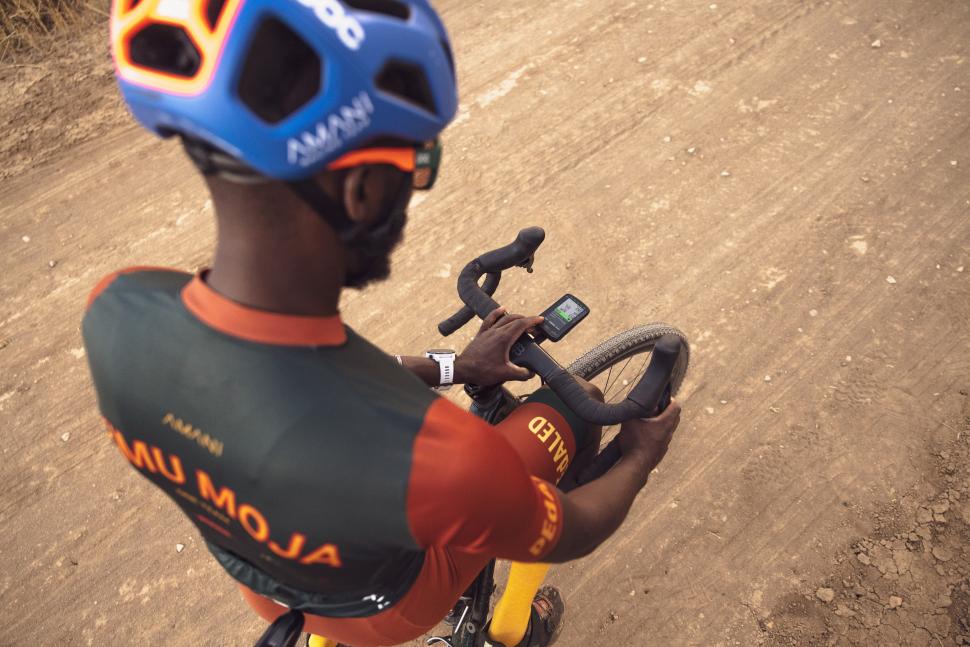
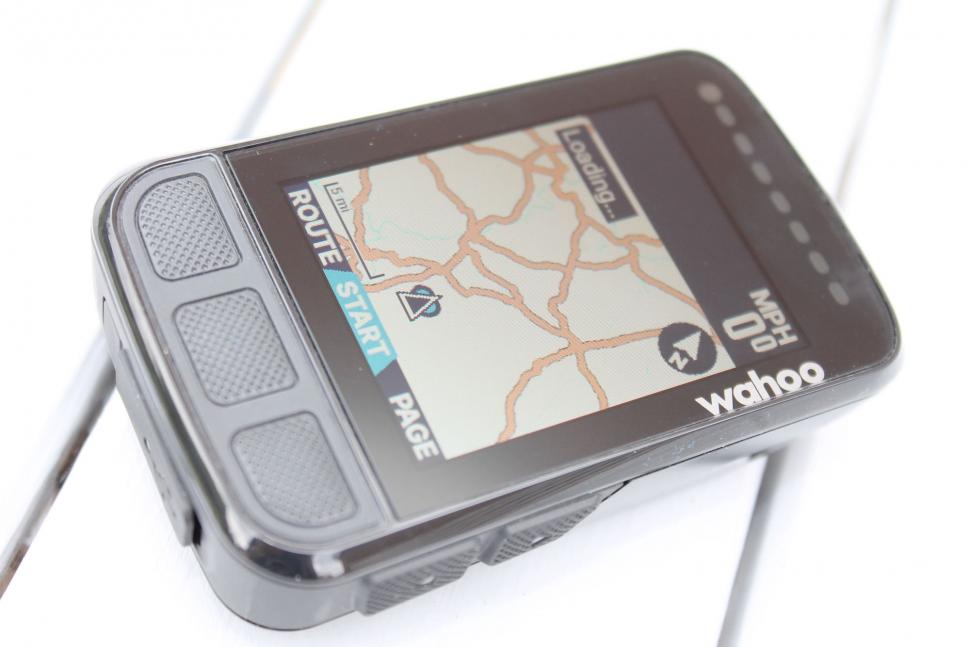
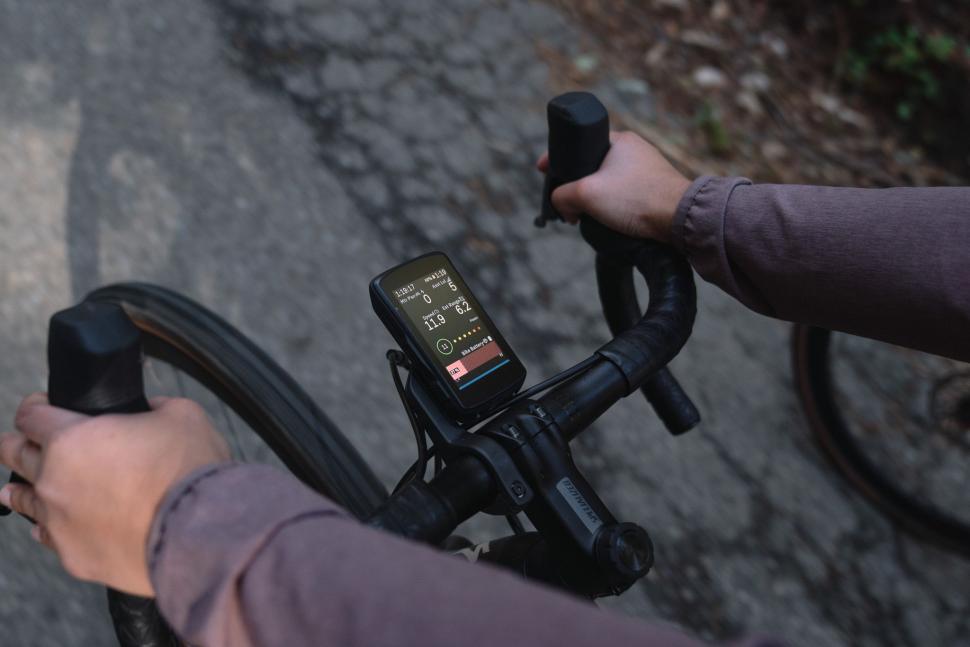
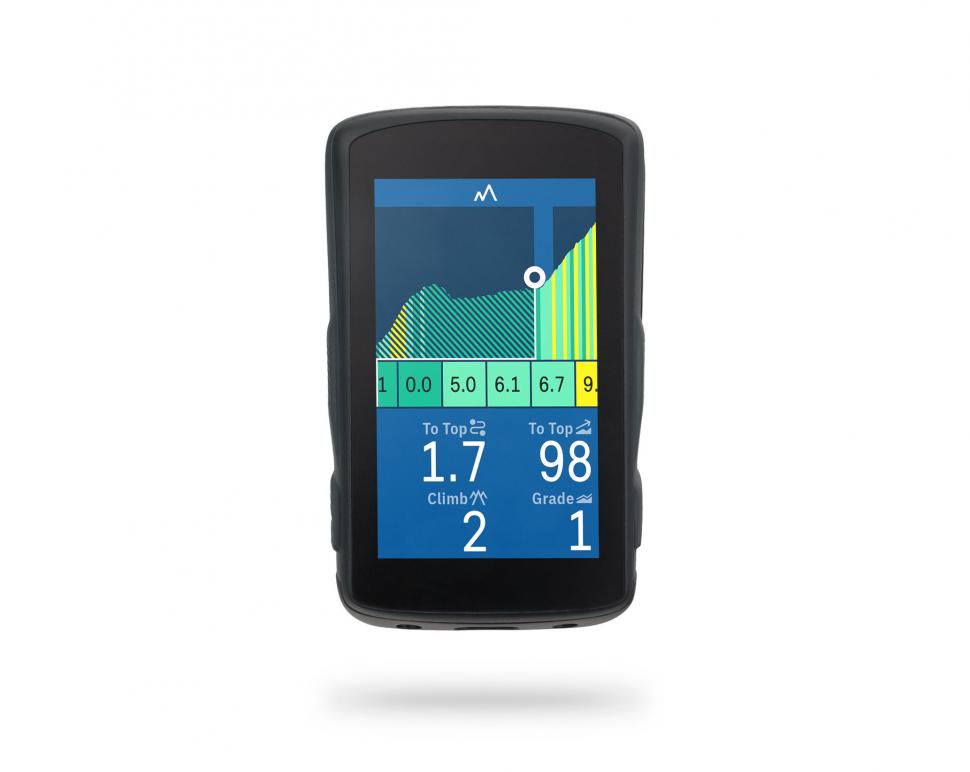

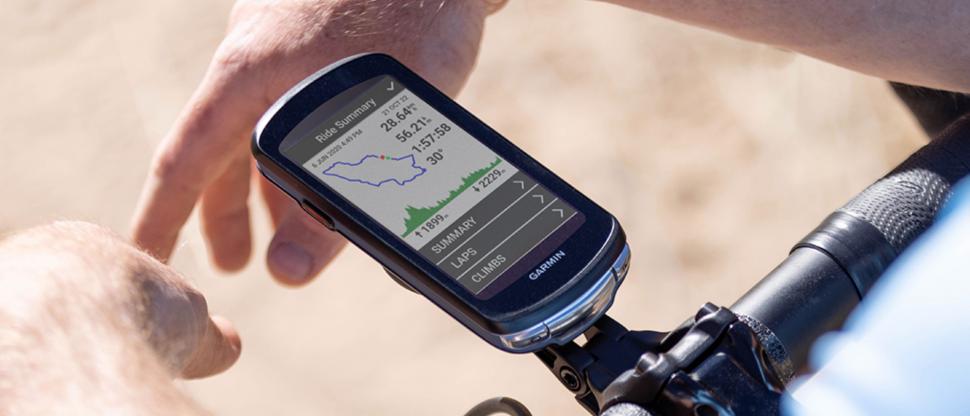

Add new comment
17 comments
"If you’re a cycling content creator or someone else who needs to record your computer screen, not only does the Hammerhead do it, it’s the only computer that does."
Garmin computers do have standard functionality to make individual screen captures, and the beta builds have a hidden feature to record the screen, be it limited to 2 Hz bitmaps.
As a cycling enthusiast, I was interested in reading about the latest developments in cycling computer technology. It's amazing to see how far these devices have come and how they continue to evolve to meet the needs of cyclists of all levels. The integration of new technologies such as touch screens and wireless makes it easy to track trips, monitor progress, and share data with others.
"They suggested a scenario where gathering data from weight sensors in your axles, combined with temperature sensors, GPS and glucose monitoring, could lead the computer to tell you it’s noticed a performance drop-off that it hypothesises is down to you having drunk your two big bottles of water."
Would a weight sensor be capable of detecting that water had been transferred from the containers on the frame into the larger container on the saddle?
I am sure someone somewhere is working on it. But the important bit is to know which bottle - front bottle with electrolites for or rear bottle with caffeine. Personally i use an old smartphone - no SIM card, no WiFi, but big mapping area, which is what I want.
@TomWeijand Your analogy with domestic solar panels is a poor one. I wagered on the same thing twelve years ago when the Governmant feed in tariff was excellent, I figured the tecnology would rapidly improve. Since then the feed in tariff has been virtually scrapped altogether and the efficiency has completely stagnated at just over 20%. Fortunatley I bit the bit the bullet at the beginning of last year since when domestic energy bills have sky rocketed along with the price and availabilty of solar panels. There is always a breakthrough just over the horizon, in the case of solar panels it hasn't happened and doesn't look likely to. That's before you get started on the environmental benefit of just boarding the train.
All of them - take the active screen area to the edges of the device !!!! Why are such large expanses of black border acceptable in this day and age. What's the point of mapping functionality if you need to get a pair of reading glasses out to see anything? Borderless screens have been a thing on every other gadget type for years. Who thinks Apple, Sony, Samsung etc would bring devices to market with these huge screen borders (and before anyone says it, at least on the Garmin, the glass already goes to the edge of the device so the device would be no more vulnerable than it is today). There's a reason so many people choose to mount their smart phone to the handlebars.
Totally agree. It's increasingly mystifying that bike computers have such wide bezels round the screen.
I just popped away to do the maths of how much of the device surface area is taken up with active screen pixels. The results for a few devices are as follows:
Garmin Edge 1040 Solar - 50%
Garmin Edge 830 - 51%
Wahoo Bolt - 41%
Wahoo Roam v2 - 38%
Hammerhead Karoo 2 - 48%
Those are surprisingly low percentages.
While smaller bezels look pretty, I'd rather a bigger bezel and a more rugged design in case I drop my device.
I know the two requirements aren't mutally exclusive, they are certainly related
I'v owned a couple of Garmin products and always keep coming back to the same point of criticism: their hardware is crazy good but if you want decent support or a good manual, you're on your own.
I recently got a Garmin watch, and after successfully pairing it to my phone, by the next morning it had lost the connection and nothing I could do would fix it. After exhausting the online remedies, in despair I phoned the Garmin helpline. I actually spoke over a decent line to a real person with a good command of English who diagnosed the problem and told me how to fix it, first time. I was pleasantly surprised. (Watch needed a s/w update that could only be delivered via PC link - odd, but it worked).
Not my experience. Had great service from Tacx who are have been Garmin for a good few years now.
Likewise - had a Varia headlight out of warranty with some cosmetic corrosion on it, replaced without question, and an Edge 1030 also out of warranty with screen haloing, replaced with one phone call.
Only real problems I've had are with the Tacx Bike Smart that had a knocking left crank, they wanted me to send it back (>50kg and I'd binned the box) which I fixed myself with FSA pre-tension bolt in the end, common fault, and a few crap firmware updates to Edge 1040 Solar, which hopefully are getting better.
Overall, I like Garmin stuff, on club rides there are people who evangelise about their Wahoo and Hammerhead stuff as if they never go wrong but you only have to dip into their support forums to see that's not the case.
The Edge Explore 2 is also £100 cheaper than the Garmins which do display electronic gearing data. That's an easily understandable benefit. I have the gearing info feature on another Garmin and never used it after the initial 'thats cool' reaction. Your legs tell you what gear you're in.
Who would need more than 45 hours of battery life? Anyone on a multiday tour would benefit from it.
Making decisions not to include features? But including a feature which weight sensors in your axles... (but not telling us whether these sensors would be something you'd attach to your present hubs or if you'd have to buy new hubs or... )
Mapping! Give me nice clear mapping on a large, easy to read screen!
Head unit brand chat is the second most contentious talk arena after whether disc brakes are good or bad. The author- IMHO-erred a little too far off the neutral fence here.
Garmin had been awful in its software presentation for many years but cut it a little slack. It's now offering great hardware products and are the one company actually developing and introducing the new features that others copy. (Radar, Climbpro, Solar, crazy good battery life and expanded workout and recovery metrics).